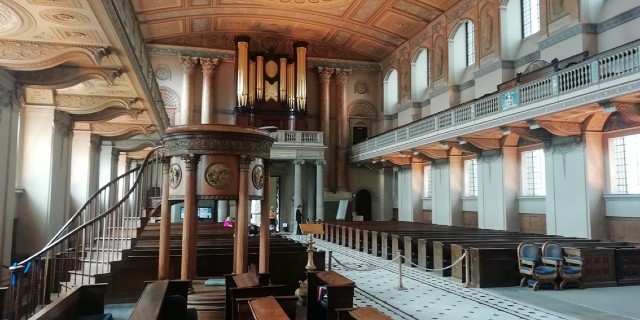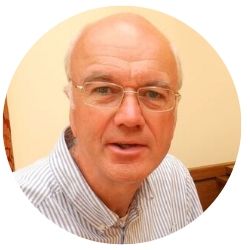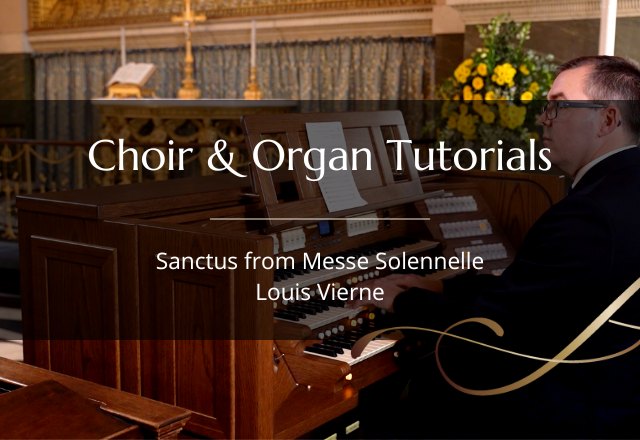Louis Vierne held the post of titulaire organist at Notre Dame in Paris for a large part of his life, finally dying at the organ bench there during a concert. Blind from birth, he is best known for his organ music, although there are a small number of songs and choral works in his compositional output.
The Messe Solennelle, from which the ORNC choir performs the Sanctus in this tutorial episode, is typical of the late French Romantic genre, and has some similar characteristics to Widor’s big mass (Vierne was Widor’s assistant at the Paris Conservatoire). It involves both of the organs typically installed in big Parisian churches, namely the Grand Orgue (the big one usually mounted above the west door), and the Orgue du Choeur (the choir organ, used for accompanying singing at the altar end).
The mass was written in 1899 and first performed at St Sulpice in 1901, with Widor on the main organ and Vierne on the choir organ.
Normally two organists needed for The Messe Solennelle
There would normally need to be two organists for this work, but it’s possible to make it work on one instrument with a few compromises, as Jonathan explains in this video.
Choir director, Ralph Allwood, starts out by asking Jonathan Eyre to discuss some of the challenges involved in playing the accompaniment. Jonathan shows the two separate organ parts and says that one has to shift between them at different times, putting in the material that seems most interesting. The choir organ would normally be very close to the choir, making it much easier to support the singing directly, as it is currently at the ORNC with the temporary Viscount instrument.

The Grand Orgue would typically be “in another post code” in many French churches, Jonathan jokes, making it hard work to accompany the choir. The delays involved would be substantial and the organist at the far end wouldn’t be able to hear the choir very easily. That’s the main reason these big French masses tend to have the Grand Orgue filling in the sections between the choral episodes, as a sort of dramatic interlude.
There’s the question of what to do at the end of the movement. Jonathan and Ralph briefly discuss whether something approaching full organ can be used in the last few bars. There is general agreement that the work can take it, so that the organ provides a full throttle roar under the final “Hosanna in excelsis”.

I’m a retired academic, with a background in music and audio engineering. I’m currently a consultant for Viscount & Regent Classic Organs, as well as being a freelance organist, including a role as organist/choirmaster at St Mary’s, Witney. I sing bass with Oxford Pro Musica Singers and the Cathedral Singers of Christ Church, Oxford.



